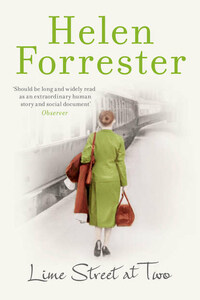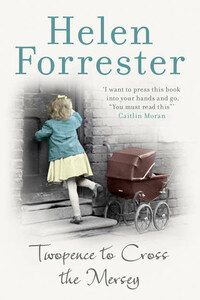Published by HarperCollinsPublishers Ltd
The News Building
1 London Bridge Street
London SE1 9GF
www.harpercollins.co.uk
First published in Great Britain by HarperCollinsPublishers 2012
This edition published by Harper 2016
Copyright © the estate of Jamunadevi Bhatia 1985
Cover layout design © HarperCollinsPublishers Ltd 2016
Cover photograph © Picture Post /Hulton Getty
HarperCollins has made every effort to find copyright holders and obtain permission for the use of copyright material in this book. If any material has been used without the owner’s permission please contact HarperCollins and we will give appropriate in future reprints or editions of this book.
Helen Forrester asserts the moral right to be identified as the author of this work.
A catalogue copy of this book is available from the British Library.
This novel is entirely a work of fiction. The names, characters and incidents portrayed in it are the work of the author’s imagination. Any resemblance to actual persons, living or dead, events or localities is entirely coincidental.
All rights reserved under International and Pan-American Copyright Conventions. By payment of the required fees, you have been granted the non-exclusive, non-transferable right to access and read the text of this e-book on screen. No part of this text may be reproduced, transmitted, down-loaded, decompiled, reverse engineered, or stored in or introduced into any information storage and retrieval system, in any form or by any means, whether electronic or mechanical, now known or hereinafter invented, without the express written permission of HarperCollins.
Source ISBN: 9780008180942
Ebook Edition © Dec 2016 ISBN: 9780007373857
Version: 2016-11-09
The generals, the institution can
select a strategy, lay it out,
but what happens on the battlefield
is quite different.
Count Lev Nikolaevich Tolstoi
(1828–1910)
The huge clock still hangs in Lime Street station, Liverpool, and marks a convenient spot for travellers to be met. During World War II, almost every girl in Liverpool must have written to a serviceman coming home on leave, ‘I’ll meet you under the clock at Lime Street.’ There were always women there, dressed in their shabby best, hair long, curled and glossy, pacing nervously under that indifferent timepiece. Every time a train chugged in, they would glance anxiously at the ticket collectors’ wickets, while round them swirled other civilians, and hordes of men and women in uniform, khaki, Navy blue, or Air Force blue, staggering under enormous packs and kitbags. Some men wore foreign uniforms, with shoulder flashes of refugee armies, navies and air forces. No matter who they were, they all shared the same expression of deep fatigue.
This huge vortex of uprooted humanity was supervised by stolid-looking military police standing like rocks against a tide. Some of them were American Snowdrops, so nicknamed because of their white helmets. Occasionally a single English civilian policeman stood out amongst all the other uniforms, a reminder of peacetime and sanity, when a quiet, ‘Now move along there, please,’ was enough to reduce a pushing crowd to order.
The station may be rebuilt, the generations pass, but the ghosts are still there, ghosts of lovers, husbands, sons, withered like flowers on distant battlefields long forgotten, and of mothers, wives and sweethearts long since dead. Amongst those kindly shades stands Harry O’Dwyer, the fiancé of my youth, a ship’s engineer, lost at sea in 1940.
I do not know how I got through that dreadful summer of 1940, after the news of Harry’s death, or the long, hopeless year of 1941. It was a period when the Merchant Navy was decimated by German submarines and aircraft. Once a man was at sea, there was not a moment when he was not in acute danger. Over the bar, in Liverpool Bay, the U-boats waited, like cats at a mousehole, for the slow, ill-defended freighters entering and leaving the ports of Liverpool and Birkenhead. If they survived the submarines, they could strike acoustic mines, magnetic mines and other menaces plopping about in the heaving waters.
Even snugly moored in dock, ships were often the target in air raids; and the homes of their crews, packed in the dockside areas, were frequently destroyed.














